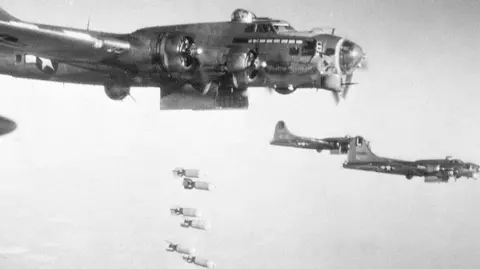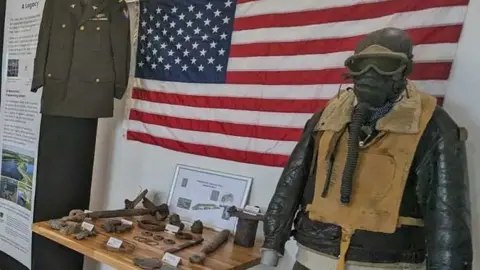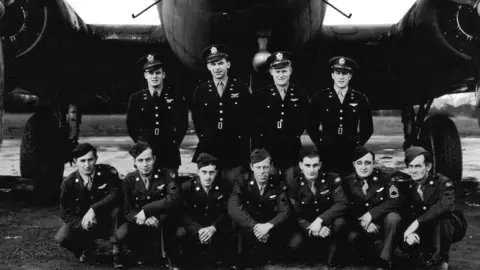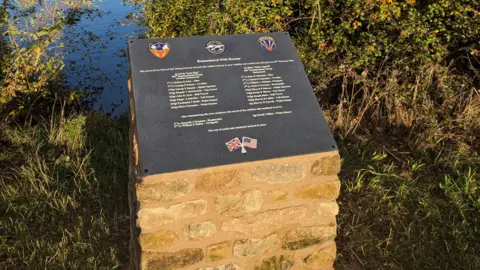Exhibition remembers WW2 crash that killed 17
 Getty Images
Getty ImagesA new exhibition has been curated to remember the crews of two bomber aircraft that collided in 1944 while preparing for a bombing raid in Germany.
The B-17 Flying Fortress planes were destroyed in the skies above Stanwick Lakes in Wellingborough, Northamptonshire, during World War Two.
Three men survived the incident on 22 February that year and returned to active service.
The memorial exhibition held at Stanwick Lakes' visitor centre from 15 to 23 February would be "compassionate", its organisers said.
Volunteers have been researching the collision and collecting memories from local people to add to information already on display.
Nadia Norman, heritage coordinator at Stanwick Lakes, said the families of those involved had "kindly shared" items for the exhibition.
"This event will display artefacts and the historic stories of the time, including personal photos and stories on the lives of the airmen themselves," she added.
 Stanwick Lakes
Stanwick LakesThe Flying Fortress was developed in the 1930s as a bomber plane that combined high altitude with speed.
It went on to drop more bombs than any other aircraft during WW2.
The two B-17s involved in the crash were part of Operation Argument, an allied forces operation targeting factories, aircraft manufacturers, shipyards and military facilities.
They each carried 10 crew members, including a bombardier who dropped the bombs and five gunners.
 384th Bombardment Group
384th Bombardment GroupOne of the planes, nicknamed "June Bug", took off from 384 Bombardment group's base at Grafton Underwood in Northamptonshire.
The other, known as Hell's Angel's II, began its journey at 303 Bombardment's headquarters at Molesworth in Cambridgeshire.
 Rockingham Forest Trust
Rockingham Forest TrustOne witness recalled the crash happened when "the wing of one plane sliced into the fuselage of another, chopping off the tailplane".
Debris spread over a wide area, including Stanwick Lakes.
The navigator and bombardier from June Bug and a gunner from Hell's Angels II parachuted to safety and returned to duty.
The exhibition is due to open on 15 February and will run from 10:00 BST until 15:00.
Follow Northamptonshire news on BBC Sounds, Facebook, Instagram and X.
